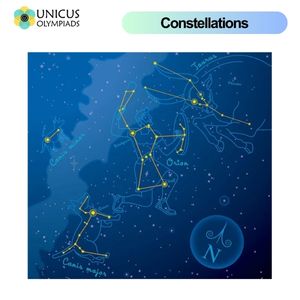

Constellations are patterns or groups of stars that are imagined to form a recognizable shape, often named after mythological characters, animals, or objects. They have played a significant role in human history, serving as essential tools for navigation, timekeeping, and storytelling. Throughout history, different cultures have identified their own constellations and used them for practical purposes, like guiding travelers or marking the passage of time. They also hold rich cultural and mythological significance, with each constellation associated with stories that have been passed down for generations. In this article, we will explore what constellations are, how different cultures have used them for navigation, and the myths and stories connected to them.
Constellations are groups of stars that, when connected by imaginary lines, form patterns in the night sky. While the stars within a constellation are often physically unrelated and scattered at varying distances from Earth, they appear to be close together when viewed from our perspective. The concept of constellations dates back thousands of years, and many of the patterns we recognize today were established by ancient cultures. Today, the International Astronomical Union (IAU) officially recognizes 88 constellations that cover the entire sky.

While constellations no longer serve as tools for navigation in the modern age, they continue to be valuable for astronomers. Constellations help astronomers locate stars and other celestial objects in the night sky. They are used to divide the sky into regions, making it easier to pinpoint locations of stars, planets, and galaxies. Additionally, constellations continue to inspire scientific research, cultural heritage, and even art and literature.
Before the advent of modern navigation tools, sailors and travelers relied heavily on the stars for guidance. Constellations served as important navigational tools, helping people determine direction, time, and location, especially when traveling across vast, open seas or through the wilderness. By identifying specific constellations in the night sky, navigators could orient themselves to the cardinal directions—north, south, east, and west.
Ancient navigators, such as Polynesian voyagers, used constellations and the stars to guide their way across vast oceans. They developed an extensive knowledge of the night sky, memorizing the positions of stars and constellations to travel across the Pacific Ocean. Similarly, ancient Greek and Roman sailors used the stars to navigate the Mediterranean Sea, and Bedouins in the Arabian desert relied on the stars for guidance across the desert sands.
Constellations have also served as a rich source of mythology and storytelling throughout history. Many constellations are named after figures from mythologies around the world, with the stars forming patterns that represent gods, heroes, animals, and other symbolic figures. These stories have been passed down through generations and often convey cultural values, beliefs, and lessons.
Different cultures around the world have their own interpretations of constellations, which they use to tell stories, mark seasons, and guide navigation. Some examples include:
Throughout history, people have used the positions of constellations to mark the passage of time. In ancient civilizations, constellations helped to determine the best times for planting crops, conducting rituals, and holding ceremonies. Many cultures used the annual appearance of certain constellations as a natural calendar to align their agricultural activities.
Many cultures around the world have used constellations as part of their oral traditions, telling stories that are passed down through generations. These stories often explain natural phenomena, teach moral lessons, or celebrate important cultural figures. The stars become symbolic of cultural identity, providing a shared framework for understanding the world.